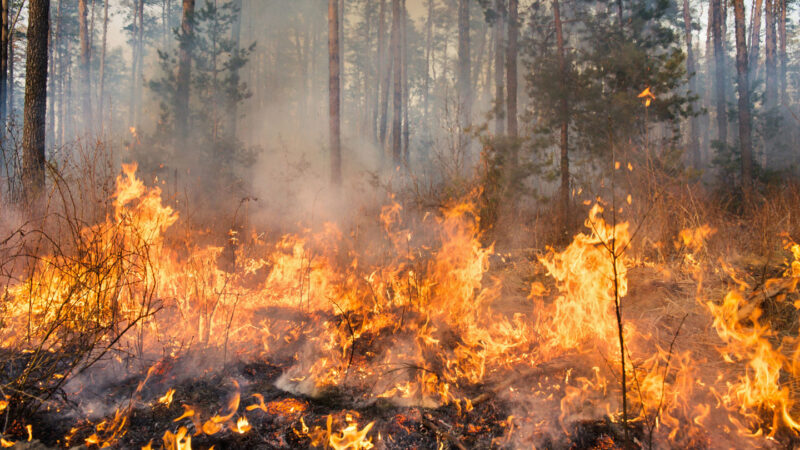There’s no denying the destructive power of wildfires. Lightning, campfires, power lines or other sources may spark these infernos. They mainly ravage natural areas, such as forests and grasslands. But when they encroach on populated places, wildfires can endanger human lives and property. In 2022 alone, U.S. wildfires ate through more than 7.5 million acres of land and destroyed more than 1,200 homes.
Still, wildfires have always been a part of some forest and prairie ecosystems. And regular burns can be vital for keeping those ecosystems healthy.
For one thing, wildfires can get rid of pests. The animals native to an area often know how to escape a wildfire by fleeing or hiding underground. But invasive species may not, so those trespassers could get wiped out.
Fires can prevent trees from overcrowding each other. This allows smaller plants and animals that need a lot of sunlight to thrive below. Plus, wildfires burn up a lot of leaf litter, pine needles and other dead matter on the ground. This clears out junk that may stifle new plant growth and releases nutrients back into the soil. Importantly, it also prevents the buildup of dead matter that catches fire easily. If the ground is covered with too much highly flammable stuff, that can fuel more extreme, more dangerous wildfires.
There are also species that have evolved to depend on regular wildfires. The seed pods of Banksia trees in Australia, for instance, only release their seeds in the heat of a wildfire. These trees need fires if they are to produce more trees. And birds such as the black-backed woodpecker prefer to live in recently burned areas, because freshly scorched trees may offer easy access to a feast of insects.
As a result, fire experts may start “prescribed burns” in certain places. Professionals set these fires only in areas and under weather conditions where they are sure they can control the flames. Prescribed burns are meant to provide the benefits of natural, low-intensity fires. That includes preventing more extreme fires that could endanger people. So, ironically, one important way to protect against fires is experts setting them.
Want to know more? We’ve got some stories to get you started:
Can wildfires cool the climate? Severe wildfires are becoming more common. Science is showing that the tiny particles they release into the air can alter Earth’s temperature — sometimes cooling it. (2/18/2021) Readability: 7.8
Cougars pushed out by wildfires took more risks around roads After an intense burn in 2018 in California, big cats in the region crossed roads more often. That put them at higher risk of becoming roadkill. (12/14/2022) Readability: 7.3
Surprise! Fire can help some forests keep more of their water In California’s Sierra Nevada mountains, a century of fire suppression has led to forests with too many trees. But areas thinned by fire now show one benefit: more water. (6/22/2018) Readability: 7.7
Explore more
Scientists Say: Firewhirl and Firenado
Analyze This: Wildfires are pumping more pollution into U.S. skies
Australian fires have imperiled up to 100 species
Trees power this alarm system for remote forest fires
Is climate change fanning megafires?
Western wildfire smoke poses health risks from coast to coast
Wildfire smoke seems to pose its biggest health risk to kids
Climate change drove Australian wildfires to extremes
Australian wildfires pumped smoke to record heights
Warning: Wildfires might make you itch
Wilder wildfires? Computing helps predict their path and fury
‘Zombie’ wildfires can reemerge after wintering underground
Wildfire smoke seeds the air with potentially dangerous microbes
Wildfires worsen extreme air pollution in U.S. northwest
California’s Carr Fire spawned a true fire tornado
Activities
Word find
In an activity from PBS Learning, use historical data to see how wildfires have changed across the western United States in recent decades.
